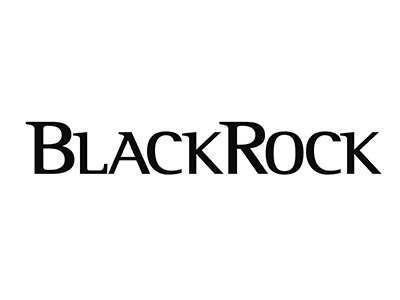The fund’s manager Evy Hambro is an industry veteran, clocking up three decades of investment experience
The trust aims to provide long-term income and capital growth by investing in mining and metal assets worldwide
2023 was a varied year for commodity markets, although mining shares generally struggled.
How it fits in a portfolio
BlackRock World Mining Trust aims to maximise the total return to investors through a combination of capital growth and consistent dividends. The managers achieve this by investing in mining and metals assets across the globe, including some higher risk emerging markets. While they mainly invest in shares, they’ll also look at other assets including mining royalties, bonds and some physical metals to help with diversification.
Investing in the trust could help boost a portfolio’s long-term growth potential but this is a specialist area so adds risk. We think funds and investment trusts investing in a specific sector should usually only form a small part of a well-diversified investment portfolio. Investors in investment trusts should be aware the trust can trade at a discount or a premium to its net asset value (NAV).
Manager
The trust is co-managed by Evy Hambro and Olivia Markham.
Hambro has been in the industry since 1994, spending time with Mercury Asset Management and Merrill Lynch, before they merged with BlackRock in 2006. Some other responsibilities include being Head of Global Thematic and Sector Investing and Head of the Natural Resources Equity Team.
Markham became co-manager of the trust in 2015. She’s a member of the Natural Resources team and her coverage spans an array of sectors including gold, mining and the circular economy. Markham started her career at BlackRock in 2011, having previously held the position of Head of the European Mining Team at UBS. She also co-manages the BGF World Mining Fund and the Commodities Income Investment Fund.
Both managers can draw upon the resources available to them at BlackRock, including access to the broader Natural Resources Team, seven of whom are dedicated to the mining and gold sectors.
Process
Hambro and Markham closely monitor around 400 mining companies, a number which has been growing as industries align with the energy transition. They’ll invest in companies with strong cash flows, healthy balance sheets, high-grade reserves and high-quality management teams.
While adopting a blended style of top down and bottom-up research is crucial to the process, they place more emphasis on bottom up, individual company analysis. Combining this work with onsite company meetings enables them to speak to employees, not just management. This provides an opportunity to physically assess the sites or mines they invest in. This is particularly important within this sector because of the impact that things such as poor health and safety standards can have at such sites.
As at the end of December 2023, the trust had around 93% invested in mining and metals shares, including diversified mining groups like BHP and precious metals producers like Freeport-McMoRan. Over the year the managers increased their holdings in some of the diversified mining companies like BHP and Rio Tinto as these tend to be a bit cheaper than the specialist mining companies, but still give exposure to the more attractive metals like copper.
The rest of the trust is invested in bonds, debentures (a type of bond or debt instrument), and royalties to provide a higher and more diversified yield. The investments that make up this part of the portfolio include Vale Debentures, BHP Brazil Royalties, and some unlisted companies including Jetti Resources and MCC Mining.Vale Debentures offers a return linked to iron ore prices. BHP is the main royalty investment, offering a share in revenues from a specific copper and silver mine in Brazil.
Investors should be aware these unquoted assets are higher risk and tend to be more difficult to buy and sell than listed shares. The trust can also borrow money to invest with the intention of increasing returns (known as gearing) and use derivatives. These strategies could magnify losses in a falling market and increase risk.
Culture
BlackRock is currently the largest asset manager in the world, with around $10.5 trillion of assets under management globally as of May 2024. The company was founded in 1988 by eight partners including current CEO Larry Fink and is known for both active and passive strategies across the world. Employees at BlackRock are encouraged to hold shares in the company so that they are engaged with helping the company perform well and grow.
The culture within the teams across BlackRock is also strong. At all levels, debate and challenge is encouraged, and the teams work closely together daily. Managers make good use of the overlap between teams, which helps with idea generation but also spurs conversation around industry trends.
ESG integration
ESG integration is extremely important in the mining sector, and the managers seek to understand the ESG risks and potential opportunities of all of the companies and industries in the portfolio. The mining sector faces several challenges such as its reliance on water, relatively high carbon emissions and the politically sensitive location of some of the assets. On the other hand, this sector is key to providing the materials needed for a transition to a greener economy, such as those needed to manufacture batteries.
The managers prefer not to invest in companies which have high ESG risks (ones which are likely to impact a company’s financial position or operating performance) unless the company has plans to address these risks in an appropriate way. The managers of the trust take a long-term approach, focused on talking to the managers of companies that they consider to have less than ideal ESG practices and trying to get them to improve.
For example, over the course of 2023 one of the managers’ main focuses for engagement was talking to the board of Vale (a diversified mining company) about governance issues. Changes have now been made to the board, with new international independent directors being added. The company has also started to engage with local communities impacted by its operations which is encouraging.
Cost
The ongoing charge, over the trust's financial year to 31 December 2023, was 0.91%. This is slightly lower than the previous year’s figure of 0.95%. Investors should refer to the latest annual reports and accounts and Key Information Document for details of the risks and charging structure.
If held in a SIPP or ISA the HL platform fee of 0.45% (capped at £200 p.a. for a SIPP and £45 for an ISA) per annum also applies. Our platform fee doesn't apply if held in a Fund and Share Account or a Junior ISA. As investment trusts trade like shares, both a buy and sell instruction will be subject to our share dealing charges within any HL account except online deals in a Junior ISA.
Performance
Since the trust launched in December 1993, it’s delivered good returns for investors. It’s also delivered good returns under Hambro’s tenure. He took the helm in September 2000 and from that date to the end of May 2024 the trust’s share price has risen 1,360.52%*. Past performance isn’t a guide to the future.
Over the trust’s most recent financial year (December 2022 to December 2023), the NAV and share price fell by 6.20% and 10.40%, respectively. This was some way behind the reference benchmark (the MSCI ACWI Metals and Mining 30% Buffer 10/40 Index) which rose by 2.4% over the same period.
2023 was a difficult time for the sector generally, with higher interest rates and inflation, lower than expected growth in China and geopolitical events all creating uncertainty amongst investors. Commodity markets are diverse and some commodities fared much better than others in this environment. Lithium, for example, fell sharply, whilst gold was a strong performer. Shares in mining companies generally fell over the year, as investors became concerned over the prospect of lower demand in China.
Given this backdrop, some of the biggest investments in the fund suffered a difficult year for a variety of reasons. First Quantum Minerals, a copper miner, was forced to close its largest asset due to the populist agenda in Panama where it was operating. This led to the share price of the company declining 60%. Chalice Mining, on the other hand, fell after setting poor project parameters.
Even in such a difficult environment, however, there were some better performing stocks in the trust. Ivanhoe Mines, a copper miner, rose in value after its mine in the Democratic Republic of the Congo ramped up production, and on the back of some exciting exploration results.
Lower commodity prices and higher costs meant that many of the companies held in the trust paid lower dividends than they did last year. This means that the income from the trust as a whole has also fallen year on year from 40.00 pence per share in 2022 to 33.50 pence per share in 2023. At the time of writing, the trust yields 5.84% but yields are variable and aren’t a reliable indicator of future income.
The trust traded at a discount of 2.45% at the time of writing, this compares to an average discount of 3.78% over the previous 12 months.
Annual percentage growth
May 2019 to May 2020 | May 2020 to May 2021 | May 2021 to May 2022 | May 2022 to May 2023 | May 2023 to May 2024 | |
|---|---|---|---|---|---|
BlackRock World Mining Trust PLC | 10.64% | 97.17% | 18.88% | -13.80% | 7.02% |


